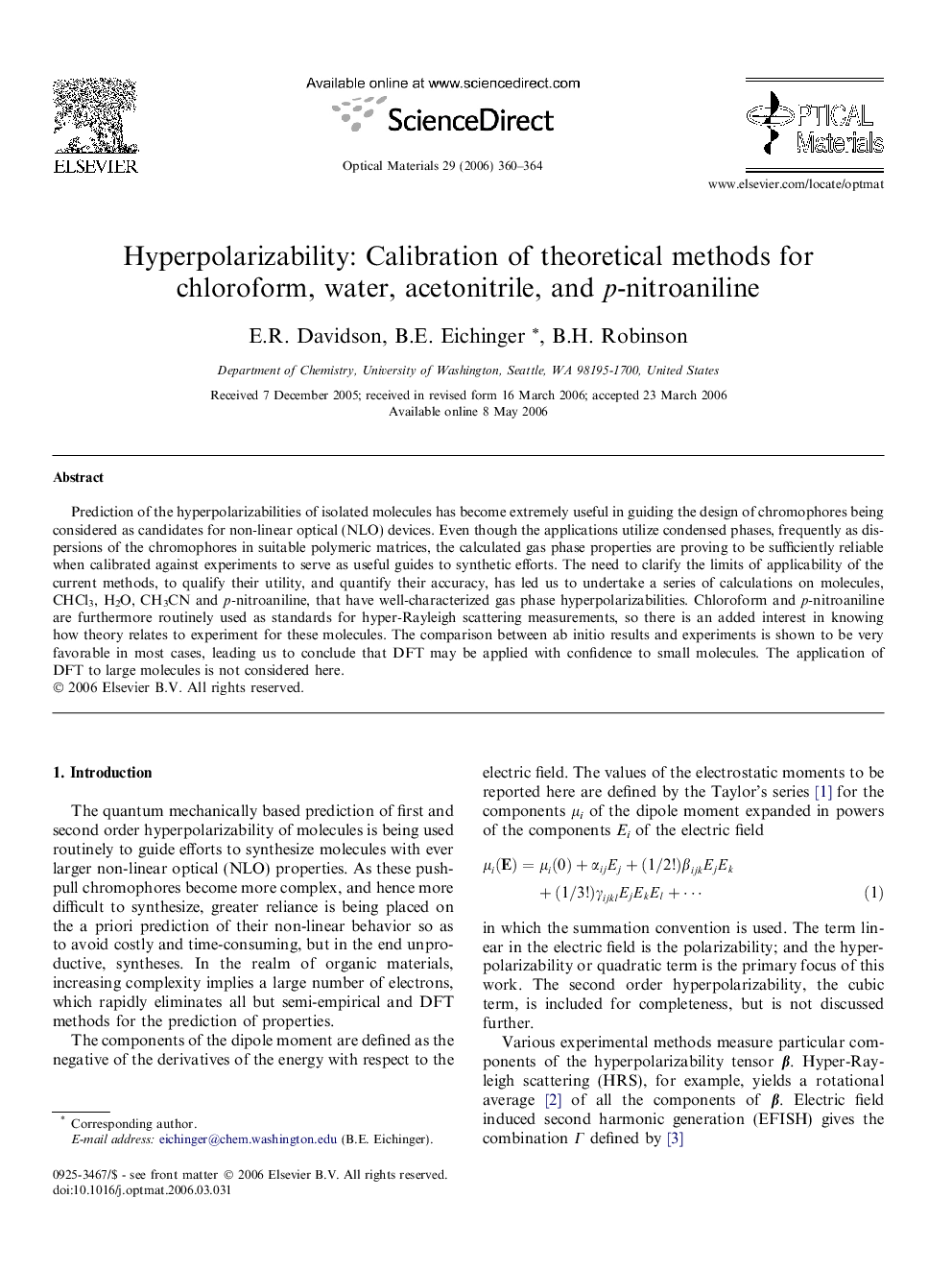| کد مقاله | کد نشریه | سال انتشار | مقاله انگلیسی | نسخه تمام متن |
|---|---|---|---|---|
| 1496634 | 992970 | 2006 | 5 صفحه PDF | دانلود رایگان |

Prediction of the hyperpolarizabilities of isolated molecules has become extremely useful in guiding the design of chromophores being considered as candidates for non-linear optical (NLO) devices. Even though the applications utilize condensed phases, frequently as dispersions of the chromophores in suitable polymeric matrices, the calculated gas phase properties are proving to be sufficiently reliable when calibrated against experiments to serve as useful guides to synthetic efforts. The need to clarify the limits of applicability of the current methods, to qualify their utility, and quantify their accuracy, has led us to undertake a series of calculations on molecules, CHCl3, H2O, CH3CN and p-nitroaniline, that have well-characterized gas phase hyperpolarizabilities. Chloroform and p-nitroaniline are furthermore routinely used as standards for hyper-Rayleigh scattering measurements, so there is an added interest in knowing how theory relates to experiment for these molecules. The comparison between ab initio results and experiments is shown to be very favorable in most cases, leading us to conclude that DFT may be applied with confidence to small molecules. The application of DFT to large molecules is not considered here.
Journal: Optical Materials - Volume 29, Issue 4, December 2006, Pages 360–364